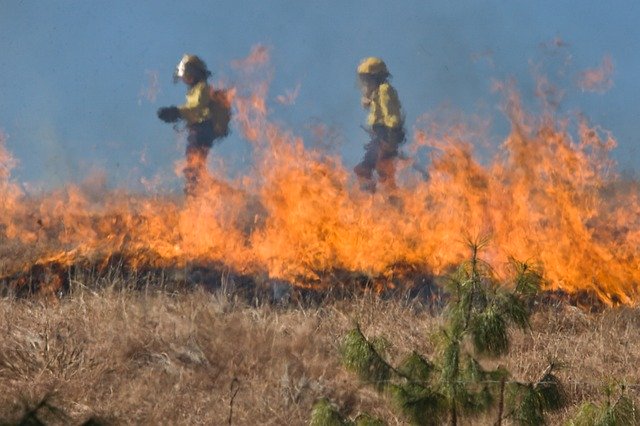
Fire has been ever present in the news over the last few weeks, with more than 10 million hectares of Australian bushlands having gone up in flames since September 2019. What particularly marks these fires out from previous years is the high fraction of burnt land which has been forest.
These forest fires have been catastrophic for local people and the animals that inhabit them, including many rare species. Climate change and the associated long-term drought in the region is likely a major factor behind these fires, but could such fires themselves also have implications for climate?
One of the major services that forests provide for us is the storage of carbon that would otherwise be in the atmosphere in the form of carbon dioxide. Most of this carbon is stored as wood or as organic matter in soils. In fact, forests don’t only store carbon, but actively take it up. By our calculation, forests are responsible for taking up about 20% of the carbon dioxide emitted by human activities. This has two important consequences. Forests, as a whole, are substantially slowing the rate of climate change. Loss of forests is likely to release a large amount of stored carbon to the atmosphere.
So, what does a forest burning mean for the amount of carbon dioxide in the atmosphere and, thus, for climate? Burning is one of many seemingly catastrophic events that can happen to a forest. Other examples include blow-downs from storms and large insect outbreaks. These events, known as disturbances, are often thought of as detrimental, but actually they play a fundamental role in the functioning of many ecosystems. For instance, many forests in Australia actually use heat from fire to aid the germination of a new generation.
It is disturbances that create the patchwork that characterises many of our forest landscapes. Some parts of a forest may be tall and majestic, whilst others may be full of much smaller, younger trees, in an area where a disturbance happened a few years before.
We recently calculated that the total biomass of trees killed by large disturbances (including human harvest) is about two billion tons per year, corresponding to 3.7 billion tons of carbon dioxide. However, this doesn’t mean that the amount of carbon dioxide in the atmosphere increases by that amount. In fact, it should be balanced by uptake in the forests that are regrowing after earlier disturbances.
This implies that, across the forest as a whole, we would expect to end up with an equilibrium – some areas of the forest are recently disturbed and emitting carbon, whilst other areas are taking up carbon. In fact, globally, those areas taking up carbon appear to have been outweighing those recently disturbed, likely largely as a result of changes in management of forests over the last decades and centuries, which have increased the relative amount of forest in the regrowth stage.
However, when climate changes, or the ways we manage forests, increase the severity or frequency of disturbances or allow new disturbance types to affect forests, then we can expect to see the opposite pattern. Fires such as those in Australia, and also recently in Siberia and the western USA, could signal a shift away from a relatively balanced, equilibrium, state. Larger or more frequent disturbances mean that areas that are regrowing do not typically get to grow as large before getting disturbed again. So, over time, the average tree size gets smaller and the total amount of carbon that the forest holds is reduced. In these cases, the forest becomes a net source of carbon to the atmosphere, until a new equilibrium is reached.
Australia’s forests are, at least, mostly well adapted to fire. However, in forests where fire is a rare event, major fires may even fundamentally change the type of ecosystem. A recent study in Borneo showed how fire could lead to permanent loss of rainforest. Even forests which are used to occasional fires can be transformed by especially severe fires , which leave no trees or seeds for the forest to regenerate from. In these cases, the new equilibrium landscape might hold much less carbon, with that carbon instead in the atmosphere, adding to climate warming.
As the climate continues to warm, we can expect disturbances such as fires, insect outbreaks or droughts, to hit our forests with increasing severity, as the type and size of trees shifts out of balance with the conditions to which they are exposed. Different forest types will respond in quite different ways. In the TreeMort project, at the Birmingham Institute of Forest Research, we are working to quantify how we expect these different disturbances to change across the globe over the next decades and what the implications will be for the amount of carbon dioxide in the atmosphere. Quantifying these changes is important not just for the state of our forests, but for understanding whether we can continue to rely on them to offset our burning of fossil fuels.
Thomas A. M. Pugh and Nezha Acil - School of Geography, Earth and Environmental Sciences.